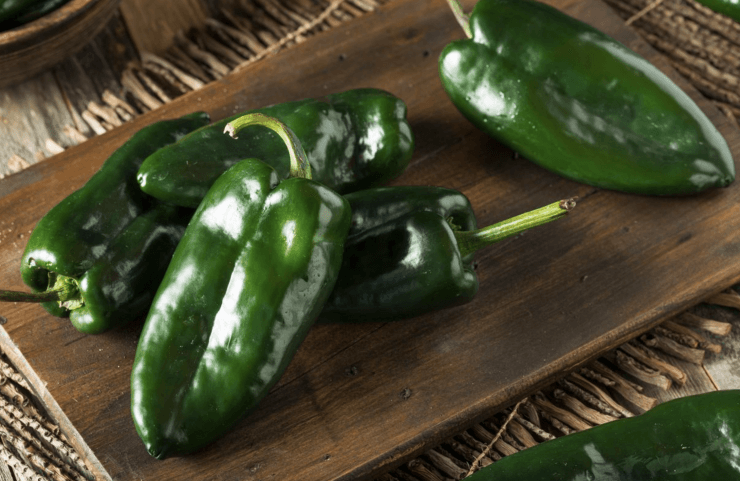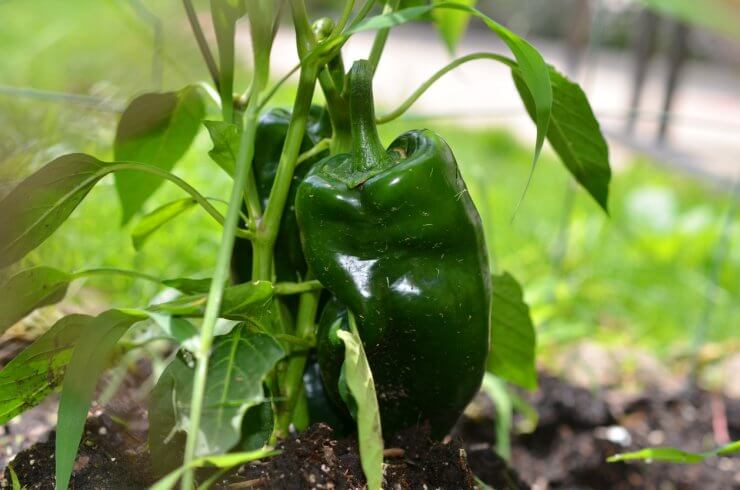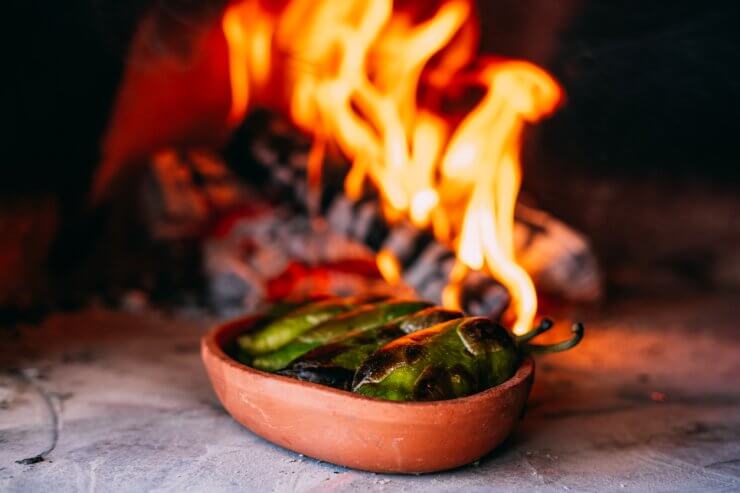
As an avid food gardener, I have a lot of favorites, but when it comes to peppers, the Poblano pepper holds a special place in my garden and my heart. It’s the James Bond of the pepper world—smooth, sophisticated, and just spicy enough to keep things interesting. If you love homegrown flavor with a touch of heat (but not too much), the Poblano is the perfect garden companion.
Before we dive into how to grow the best Poblano peppers you’ve ever tasted, let’s take a quick stroll through history and learn why this incredible plant has earned its rightful place in home gardens across America.
Discover 7 top tips for growing, harvesting, and enjoying tomatoes from your home garden—when you access the FREE guide The Best Way to Grow Tomatoes, right now!
A Quick History of the Poblano Pepper: Mexico’s Mild Gift to the World
Hailing from Puebla, Mexico, the Poblano pepper is a staple of Mexican cuisine and has been cultivated for centuries. Unlike its fiery cousins—the habanero and ghost pepper—the Poblano is mild, usually ranging between 1,000 and 2,000 Scoville heat units (SHU). That’s about as spicy as a bell pepper with a little attitude.
One of the most famous uses of the Poblano is in chiles en nogada, a dish that features roasted Poblanos stuffed with a delicious mixture of meat, fruit, and nuts, then topped with a creamy walnut sauce and pomegranate seeds. The dish is considered the unofficial national dish of Mexico, symbolizing the colors of the Mexican flag.
In the United States, Poblanos have surged in popularity among home gardeners due to their rich flavor, versatility, and relatively easy-growing nature. Once fully ripened, they turn deep red and can be dried into Ancho chilies, which are a staple in many Mexican and Southwestern recipes.
But enough history—let’s get to the fun part: growing these beauties in your garden!

Growing Poblano Peppers: A Comprehensive Plan for Success
Step 1: Selecting the Right Poblano Seeds or Seedlings
If you’re starting from seed, look for heirloom Poblano varieties from reputable seed suppliers. Poblanos thrive in warm climates, so if you live in a cooler region, consider starting them indoors 6-8 weeks before your last frost.
If you’re buying seedlings, pick healthy plants with strong stems and no signs of yellowing or disease.
Step 2: Where to Plant Poblanos
Poblano peppers are wonderfully adaptable! Whether you have a sprawling backyard, a raised bed, or just a sunny balcony, you can grow them successfully. Here’s how:
- Containers: Choose a 5-gallon container with drainage holes. Poblanos love warmth, and containers heat up quickly, giving them an early growing boost.
- Raised Beds: If you have heavy or clay soil, raised beds are a fantastic choice. They provide better drainage and allow the roots to spread easily.
- In-Ground Gardens: If you have well-draining soil with plenty of organic matter, Poblanos will thrive here too! Just space them 18-24 inches apart to ensure good airflow and prevent disease.
Step 3: Sunlight and Soil
- Sunlight: Poblanos need at least 6-8 hours of direct sunlight per day. They are sun worshippers, so pick the sunniest spot in your garden.
- Soil: They prefer well-draining, nutrient-rich soil with a slightly acidic to neutral pH (6.2-7.0). Adding compost or aged manure before planting will keep them happy.
Step 4: Watering and Feeding
- Watering: Poblanos like consistent moisture but hate soggy roots. Water deeply once or twice a week, depending on the weather.
- Fertilizing: Use a balanced fertilizer (10-10-10) when the plants start growing, then switch to a low-nitrogen, high-phosphorus fertilizer when they begin flowering.
Step 5: Supporting Your Peppers
While Poblanos don’t get as tall as some other pepper plants, they still benefit from light staking or caging—especially when they start producing heavy fruit. Nobody likes a pepper plant doing an unexpected face-plant in the dirt.
Step 6: Harvesting Poblanos
- Poblanos can be harvested green (mild) or red (sweeter and spicier).
- Pick them when they are 4-6 inches long and have a firm, glossy texture.
- If you leave them on the plant longer, they’ll turn red and develop a richer, smoky sweetness.

Eating Your Poblanos: From Fresh to Fire-Roasted
So you’ve grown a beautiful batch of Poblanos—now what? The good news is that these peppers are culinary chameleons, perfect for an incredible variety of dishes.
Top Ways to Use Poblano Peppers in the Kitchen
- Roasted Poblanos: Blacken them over an open flame or under a broiler, peel off the charred skin, and stuff them with cheese, meat, or rice.
- Chiles Rellenos: A classic Mexican dish where Poblanos are stuffed, battered, and fried. Pure indulgence!
- Salsas and Sauces: Their smoky, slightly spicy flavor adds depth to green salsas and enchilada sauces.
- Soups and Stews: Poblanos bring a mild heat and earthiness to chili, tortilla soup, or corn chowder.
- Ancho Powder: Drying and grinding Poblanos into Ancho chili powder creates a fantastic seasoning for BBQ rubs and mole sauces.
- Mac & Cheese: Add roasted Poblanos to your favorite mac and cheese recipe for a Southwest twist!
Pros and Cons of Growing Poblano Peppers
Because no plant is perfect, here’s the honest truth about growing Poblanos:
Pros:
✅ Mild heat level makes them versatile in cooking.
✅ Easy to grow and adaptable to containers, raised beds, or in-ground gardens.
✅ High yield per plant—one or two plants provide plenty for a family.
✅ Can be eaten fresh, roasted, or dried for Ancho chilies.
Cons:
❌ Can take a little longer to mature than other peppers (80-90 days).
❌ Susceptible to aphids and spider mites (but neem oil helps!).
❌ Thin-walled fruit means they don’t store as long as thicker peppers like bell peppers.
Want to Grow the Best Hot Peppers Ever?
If this spicy love story has inspired you to grow your own Poblano peppers, we’ve got you covered! Check out our complete guide to growing, harvesting, and eating the best hot peppers ever—packed with expert tips, troubleshooting advice, and recipe inspiration.
Whether you’re a seasoned pepper grower or a newbie with a dream, there’s always room for a Poblano (or three) in your garden. Happy growing—and even happier eating!
Do you grow poblano peppers? If yes, what are your tips?
Discover 7 top tips for growing, harvesting, and enjoying tomatoes from your home garden—when you access the FREE guide The Best Way to Grow Tomatoes, right now!




